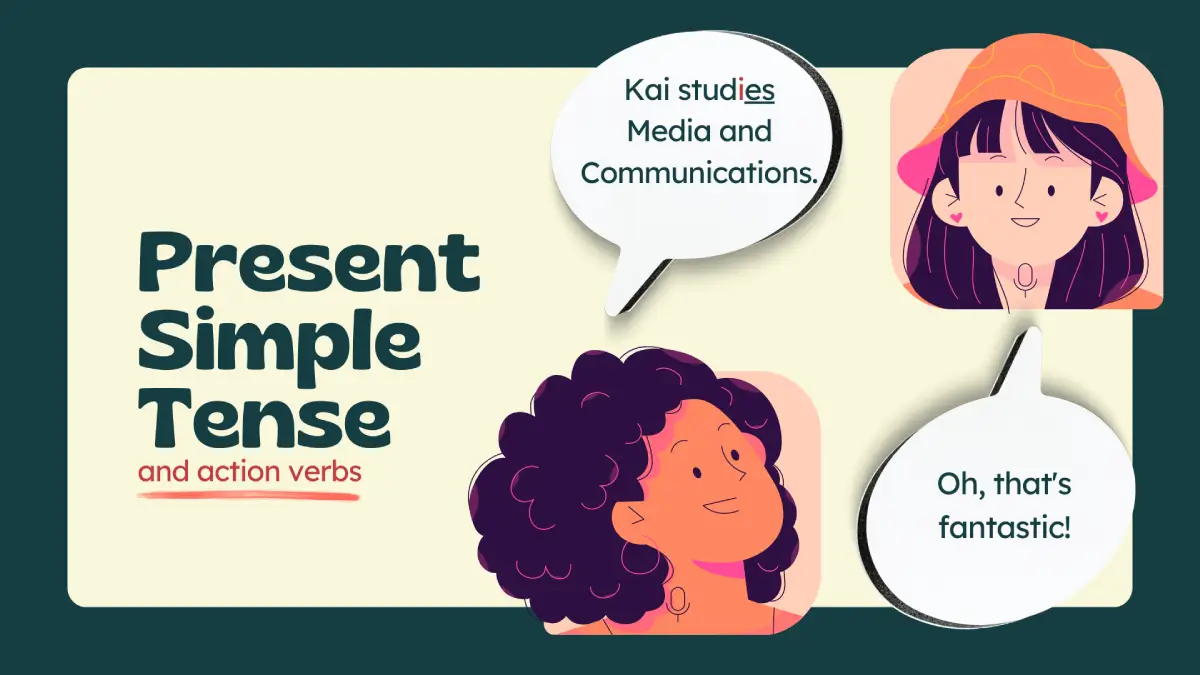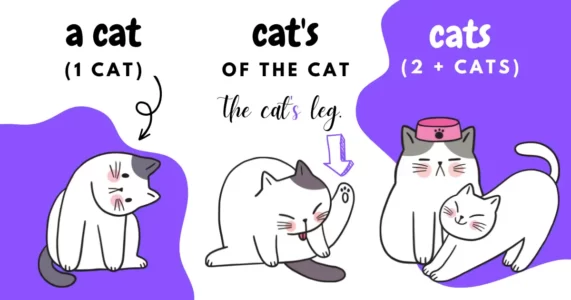Introduction
In English, action verbs can be used to express a wide range of activities including physical actions (e.g. run, jump, swim), mental actions (e.g. think, remember, imagine), and state of being (e.g. exist, belong). Action verbs can be used in the present, past, and future tenses, allowing us to talk about a range of different events and experiences. For example, “I am running” and “I run everyday” use present tenses to express, respectively, activities we do at the moment of speaking or regularly in our lives. “I ran” is a past-tense action verb sentence, and “I will run” is a future-tense action verb sentence.
We often combine action verbs with adverbs or other modifiers to add more detail to the action or describe it in some way. For example, “They run quickly” is a modified version of “They run” which helps us learn more about how they run.
Learning how to use action verbs appropriately is an important part of mastering English grammar, as action verbs are a fundamental part of the language.
This series attempts to present (almost) all you need to know about action verbs and the Present Simple Tense, including how to conjugate verbs and how to ask and answer both positive and negative questions.
In Part 1 the focus will be on the first and most important step: conjugating action verbs.
I will add examples and language comparisons where needed to give the bigger picture and make a few points I believe are important when it comes to the Present Simple Tense and action verbs.
Have a look at the Table of Contents to jump to a particular section if you feel like it.
Formation (main rule)
There are specific rules to conjugating action verbs in the Present Simple Tense but before we jump to that, let’s point out something noteworthy.
Many beginner learners are intimidated by English, and there are objective reasons for that, but conjugating English action verbs should not be one of them. In fact, this is one of the easiest things to do in English because there is one simple rule (well, so to speak😀) to remember, and it is to add -s or -es to the end of the verbs for the 3rd person singular. In many other languages, as I have mentioned before, for example, in English Verbs: Verb Conjugation, Tenses & Types of Irregular Verbs, action verbs may have a different ending for each personal pronoun which means that there is a lot less a learner needs to remember when conjugating English action verbs.
Let’s compare English, Spanish, and Finnish with the verb to speak.

As it’s now clear, action verbs in English change only for the 3rd person singular, whereas in many other languages that is not the case. Russian and Bulgarian, for example, conjugate similarly to Spanish and Finnish, which I think can also be said about other languages that use the Cyrillic alphabet.
The main rule
Before going into the specifics, the first thing we need to remember about how to form the Present Simple is the main rule.
To form the Present Simple Tense, we add -s or -es to the end of the (action) verb for the 3rd person only – he, she, and it.
The details
Although the main rule for the formation of the Present Simple Tense in English is quite simple, especially when compared to other languages, there are specifics to it, as well as exceptions, and we will focus on these in the sections below.
Adding -s
We add -s to the end of action verbs in the following instances:
When ending in a consonant
Generally, when a verb ends in a consonant (d, k, p, t, etc.), add –s to the 3rd person singular.
Language math 🤓
- to work: work + s = works
- to sleep: sleep + s = sleeps
- to speak: speak + s = speaks
- David works as a bus driver.
- Sara speaks English very well.
- My cat sleeps all the time.
When ending in -e
When a verb ends in -e, we add -s to the end for the 3rd person singular he, she, and it.
Language math 🤓
- to leave: leave + s = leaves
- to drive: drive + s = drives
- to taste: taste + s = tastes
- David drives a school bus.
- Sara leaves for work early in the morning.
- The food tastes delicious.
Adding -es
When ending in -ch
Usually, verbs that end in -ch need es for the 3rd person singular. This is mainly because it would be very difficult to pronounce the combination -chs without an e.
Language math 🤓
- to teach: teach + es = teaches
- to match: match + es = matches
- Ken teaches Spanish at a local school.
- Her shirt matches her jeans.
When ending in -o
Verbs that end in -o, usually, take -es for the 3rd person singular.
Language math 🤩
- to go: go + es = goes
- to do: do + es = does
- to echo: echo + es = echoes
- Alex does the dishes every night.
- Noah goes to the store every week.
- Applause echoes in the hall.
Be careful with the pronunciation of does!
- goes [goʊz]
- echoes [ˈɛkoʊz]
- does [dʌz]
Challenges and exceptions
When ending in -y
Apart from the pronunciation of “does” which differs from the way similar verbs are pronounced, there are other challenges with the formation of the 3rd person singular. Let’s talk about them below.
When a verb ends in y, for the 3rd person singular, it usually takes -es but
- there is an additional step, and
- that is not always the case
Language math 🤓
- to study: (y ➡️ i) = studi + es = studies
- to reply: (y ➡️ i) = repli + es = replies
- Kai studies Media and Communications.
- Sara usually replies within 24 hours.
Not all action verbs that end in -y take the ending -es for the 3rd person singular. So far, the pattern that can be seen is that when the verb ends in a consonant + y, we add -es (above), but when it ends in a vowel + y, we add -s (below.)
Language math 🤓
- to enjoy: enjoy + s = enjoys
- to destroy: destroy + s = destroys
- to play: play + s = plays
- to stay: stay + s = stays
If we follow the logic above, since the verb to have ends in an -e, it should take -s for the 3rd person singular. That is not the case at all.
Language math 🤓
- *to have: have – ve + s = has ✅, and not have + s = haves ❌
- Sam has a great sense of humor.



